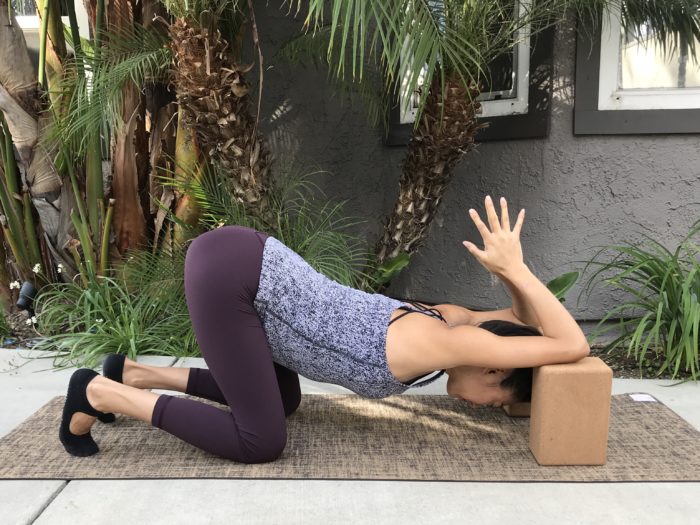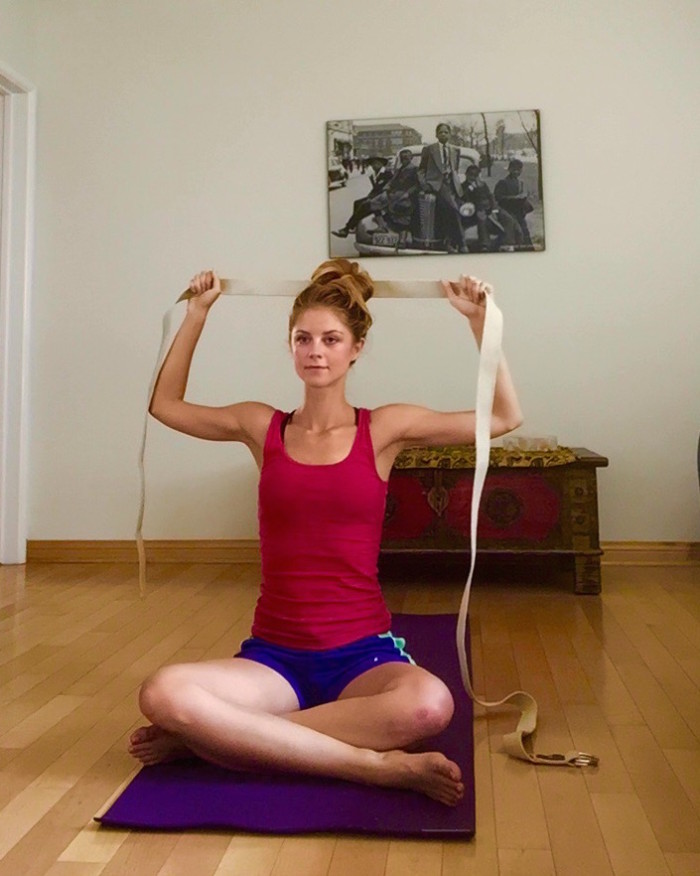If you spend most of your day looking down at your smartphone or laptop, you’re not alone. Since the COVID-19 pandemic forced us indoors for months on end, most of us have probably been spending more time than usual staring at screens. And if you’ve noticed that all of this screen time is giving you a stiff neck, you might just be dealing with a case of “text neck.”
Your cervical spine keeps your head evenly balanced on your neck. When you’re looking downwards at your phone or laptop, you’re generally slouching a bit, which forces your neck to work harder to keep your head up. If you’ve been spending eight hours per day in front of your computer to work from home, and then scrolling through social media in your downtime because your usual social activities and other hobbies are currently off-limits, you might be spending the majority of your waking hours in this position.
When you’re looking straight ahead, your head weighs between ten to twelve pounds, but if you bend your neck just 15 degrees forwards to look at a device, your neck now has to support 27 pounds of pressure. And if you tilt your head 45 degrees forward, that figure rises to 50 pounds. Basically, as you move your center of gravity forwards, the weight of your head on your neck doubles—and the more pronounced your slouch, the heavier it gets.

Slouching this way for hours at a time might make you feel tension in your neck and shoulders. And if you’re sitting in this position day in and day out for months on end, it can actually have long-term consequences. Your back and neck muscles might begin to feel significantly weaker, and in extreme cases, this can even affect your breathing. You might experience shoulder pain that does not go away after stretching and stiffness when rotating your neck. While more extreme symptoms are less likely, this habit can lead to herniated discs and neck sprains down the road. Naturally, sitting this way can also contribute to naturally poor posture, and the longer it continues, the harder it will be to fix.
Granted, all of that probably sounded a bit scary for an issue that’s casually called “text neck,” and to be fair, slouching while looking at your laptop or phone probably won’t lead to the worst possible consequences. But it can definitely leave you in pain, and chances are, you’ve already dealt with some mild symptoms.
If you know that you’ve been spending more time than ever before on these devices, it’s time to take some steps towards prevention. The easiest thing you can do to prevent text neck is simply taking breaks from using these devices! Get up and walk around for a few minutes during your workday when you have a moment to step away from your laptop. If you’ve been checking out your Instagram feed for a while, put down your smartphone and take some time to stretch.
If you have a home office space, make sure that you have a chair that supports your head and neck properly. During the workday, make an effort to improve your posture—stay conscious of how your neck feels, and try to look straight forward.

Already dealing with a case of text neck? It won’t last forever. As you work, you’ll probably want to take longer breaks when possible. And when you stop for a lunch break, resist the urge to check social media or watch YouTube videos. Instead, make this an hour where you simply don’t use your devices at all. This will give your neck some relief! If the problem persists, this could be a good time to re-evaluate the set up of your workspace. You may need a new desk and chair to be comfortable. Unfortunately, this can be expensive, so it might be best to keep an eye out for sales at office supply stores and wait for a good deal.
You may also want to try doing yoga for your neck and spine, like mountain pose, supine abdominal twists, and downward-facing dog. However, it’s very important to move slowly and carefully. Listen to your body while you practice: if a particular pose or sequence worsens the pain, stop and take a break. Using a heated pillow for your neck and shoulders can also provide some quick relief.
 Chiropractor Stretches for Neck Pain
Chiropractor Stretches for Neck Pain
 3 Ways To Open Your Upper Back Using Yoga Blocks
3 Ways To Open Your Upper Back Using Yoga Blocks
5 Yoga Exercises to Correct Rounded Shoulders
Overall, this pandemic had definitely increased our dependence on our phones and laptops. Perhaps we’re headed for a “text neck” epidemic. Thankfully, if you’re proactive about prevention, you can avoid this pesky problem.
Get more like this—Sign up for our daily inspirational newsletter for exclusive content!
__
Photo: Unsplash; Pexels; Crystal Chin; Annika Ihnat





